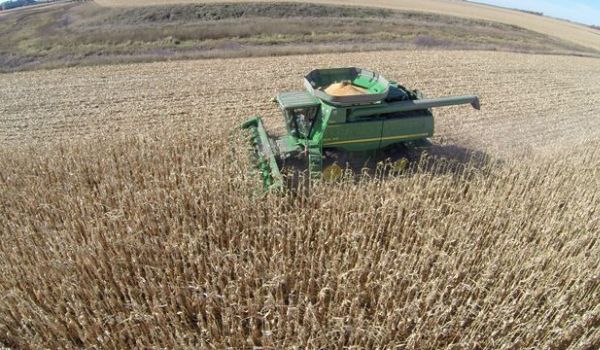When Should You Harvest Your Corn?

When should you harvest your corn? Some might think that is a silly question with a simple answer. But there is much more to consider than just harvesting the crop when it’s ready.
We all remember cold, wet years with delayed harvests and even winter/spring combining. Try to suppress those ugly memories and instead focus on more “typical” years. In 2012, we had a very dry crop. But typically, we have corn moistures in the low 20s. What is the ideal range for corn moisture? My target is 17%-23%. This range may be expanded when considering acreage constraints, harvest timing, or storage needs.
The top end of the 17%-23% moisture range is significant. At 23% moisture, the grain can still be safely stored in a natural air bin over winter without the possibility of kernels freezing together. Many new corn producers in the region rely on natural air bin drying, as it allows grain to be harvested quickly and usually leads to good grain quality, once dry. When corn is over 21% moisture, it should be dried with heat late in the season to reduce spring spoilage risk.
When moisture percentages approach the upper 20s, there is a greater chance for mechanical damage, leading to reduced storage time and possible lower test weights. In 2008 and 2009, many growers experienced issues with grain bridging and fans icing up. These situations are dangerous and should be avoided if possible.
High temperature drying is common for most parts of the corn growing region, and allows for easier storage. Growers may also see both marketing and hauling advantages in the winter with dry grain. Most dryers are sized to reduce grain moisture by 5%. Some producers will use high temps to dry the grain down to the upper teens, followed by drying the rest of the way with natural air. During this process, grain quality should be inspected repeatedly. Heat damage can easily occur, especially when attempting to reduce moisture by more than 10%.
On the other hand, grain that is too dry at harvest is at the greatest risk for yield loss. Fortunately, we do not experience this very frequently. Header loss is the biggest risk and ranges from 0.5-3%. It is most affected by low grain moisture, harvest speed, gathering chains, stalk rolls, and deck plates. A majority of harvest losses are at the gathering unit. These losses can be assessed by measuring behind the header and the combine. 2 kernels per square foot equates to 1 bushel per acre of loss. Keep these losses under 1%.
With the lower commodity price outlook for the upcoming year, you’ll want to sell every kernel you’ve got. That means harvesting all kernels produced as well as maintaining the quality of those kernels. Take your time this fall to harvest at the proper moisture. Wishing you a safe and productive harvest!



